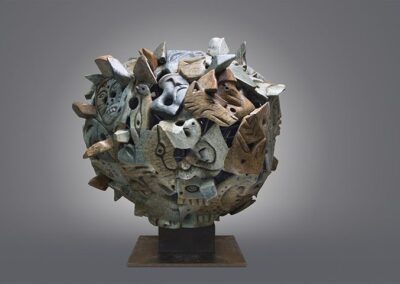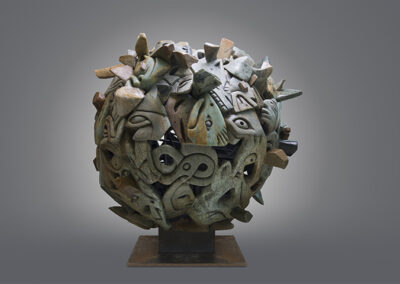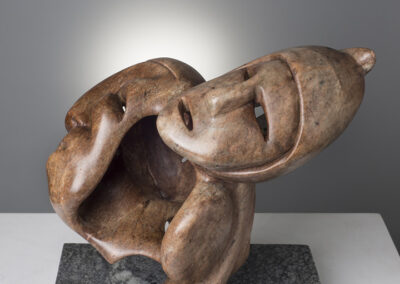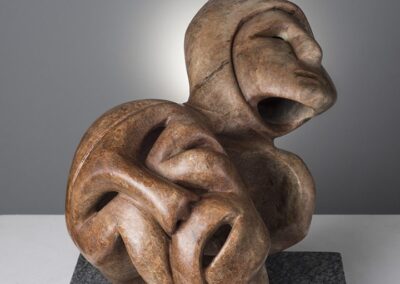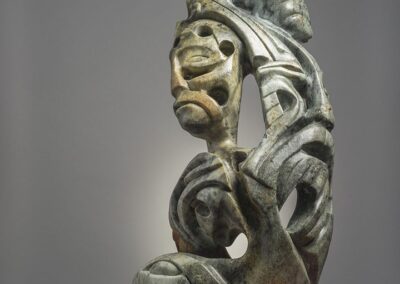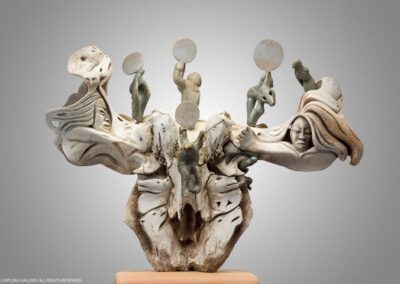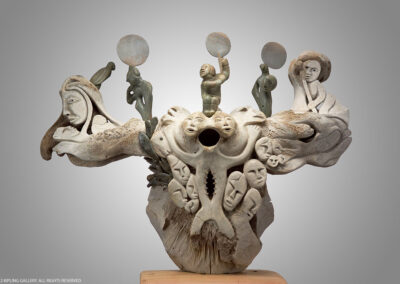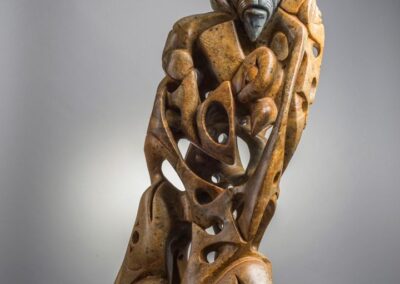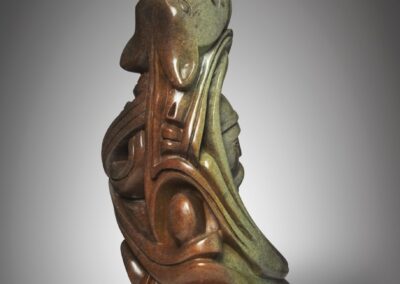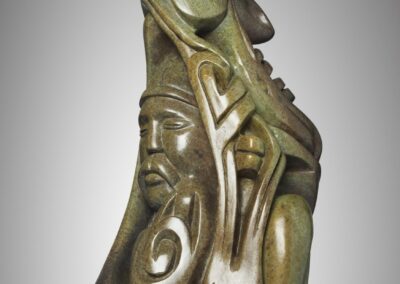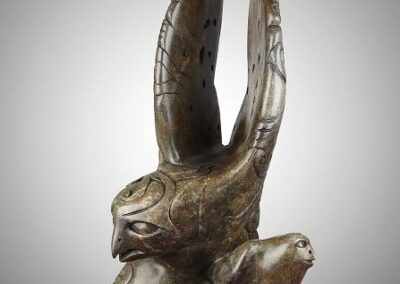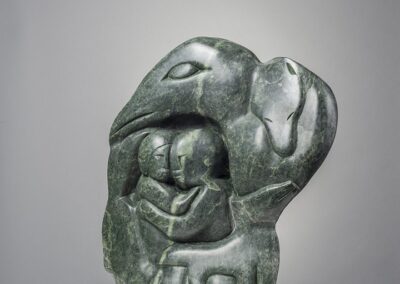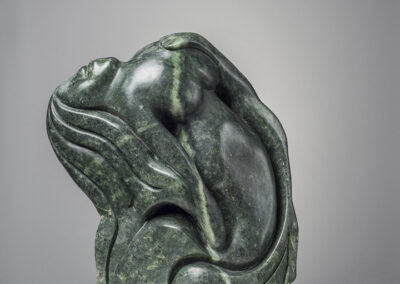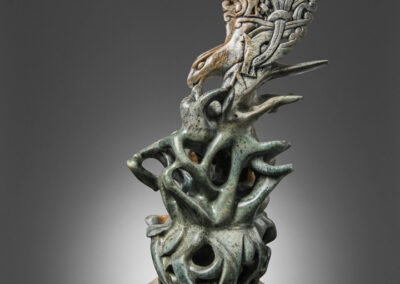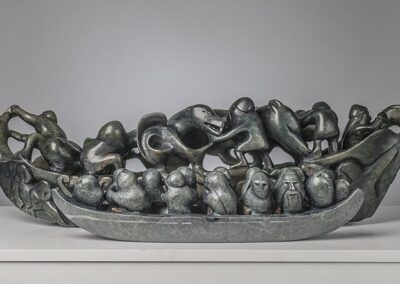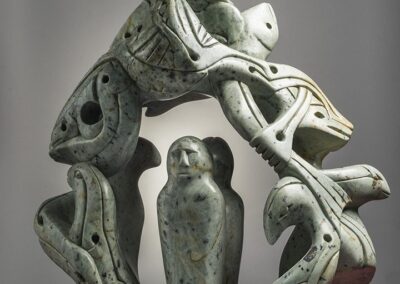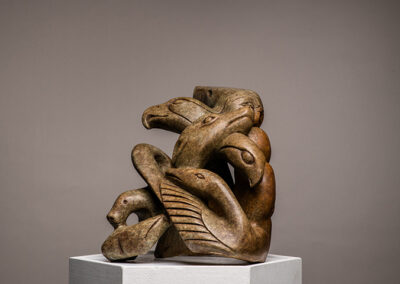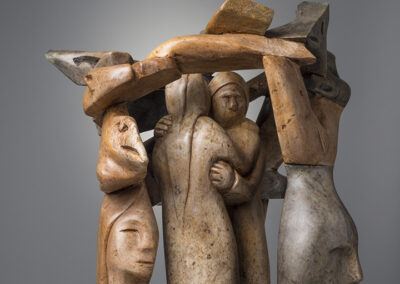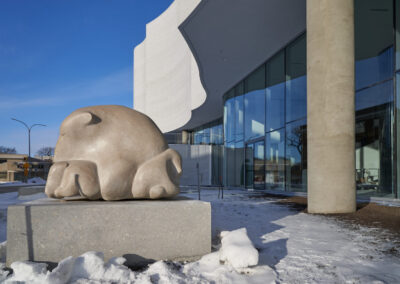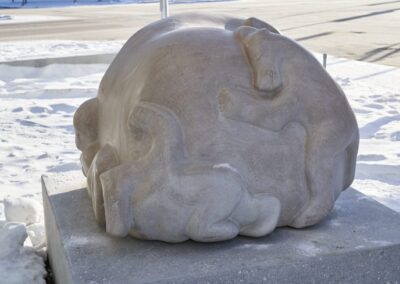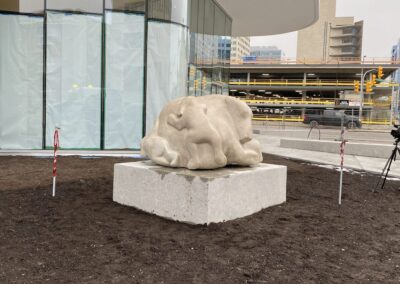Our next Artist You Need To Know is Abraham Anghik Ruben.
Abraham Anghik Ruben is a sculptor of partly Alaskan Native ancestry: he was born south of the hamlet of Paulatuk in the Inuvik Region east of the Mackenzie River Delta in the Northwest Territories in 1951. The materials that Ruben works with include whalebone, narwhal tusk, soapstone, alabaster, Carrara marble and bronze. Ruben’s artworks are finely executed sculptures that blend iconography and history from both Indigenous northern cultures as well as Viking and Norse mythology and imagery. His own experiences – in both a personal manner but in larger historical narratives – are often inspirations for his artworks.
From the time of his birth, Inuit culture would both suffer and grow under major changes that would radically – and irrevocably change their way of life: this would manifest in both his own life but especially in his artworks (this can be seen in his numerous Shaman works, as he has spoken of how his great-grandparents, noted shamans Apakark and Kagun, came from the Bering Sea region of Alaska to settle in the Inuvik Region).
“I have always tried to learn from others, either Inuit or other elderly people who can pass on their knowledge of what life is about. I try to put that into my sculpture.”
Ruben grew up in the traditional partly nomadic lifestyle of the Inuvialuit community (small bands of families, living off the land with seasonal hunting and fishing camps). However, in 1955, he – along with his two siblings – was sent to the residential school in Aklavik. Isolated from their families, they would not be reunited with them until three years later. After (in 1959) he was sent to Grollier Hall, in Inuvik, another residential school where he lived until 1970 – another eleven years. The genocidal abuse at these places would not be full exposed until years later but it had a hand in defining both the man and the artist.
“As a storyteller, Abraham builds upon that which he already knows. From his own perspective, he tells the stories of these encounters between Inuit and Viking Norse. Abraham sees great similarities between the two cultures including the practice of shamanism and a respect and reverence for the land He seeks to bring to life the experiences of the Vikings in North America from a contemporary view – stories, which have not yet found a voice.” (from his site)
This hybridity is part of the artist’s heritage, as his great aunt Paniabuluk was the wife of Arctic explorer Vilhjalmur Stefansson and accompanied him on many of his treks. Stefansson – from Manitoba but of Icelandic heritage – and a friend of Ruben’s grandfather, Captain Larson of St. Roche, who also lived within the Inuvialuit community, fostered the artist’s interest in Nordic history and narratives that have been incorporated into many artworks by Ruben.
In 1971 Abraham Anghik Ruben attended the Native Arts Centre at the University of Alaska : one of his major influences and teachers was Ronald Senungetuk. Over the next decade he worked in a variety of media : his major breakthrough came when he was represented by Jack Pollock, a groundbreaking and seminal gallerist in Toronto who featured Ruben’s work in a number of solo exhibitions at the Pollock Gallery. Like a number of commercial galleries in Canada at that time, the Pollock Gallery exhibited artists snubbed by more ‘established’ spaces.
Ruben has successfully battled cancer, and while recovering in 2004, his work and aesthetic became more focused and skilled. Since that period, he has garnered more attention for his works and his reputation has only grown.
Abraham Anghik Ruben has had numerous exhibitions around the world. Notable ones have been mounted at the Bayard Gallery (New York): Isaacs / Innuit Gallery (Toronto): Winnipeg Art Gallery: Art Gallery of Mississauga: National Museum of Natural History (Washington, DC): the National Museum of the American Indian : Smithsonian’s National Museum of the American Indian: the Kipling Gallery (Vaughan, ON): Art Gallery of Algoma (Sault Ste. Marie, ON): Museum Cerny Inuit Collection (Bern, Switzerland): the Prince of Wales Northern Heritage Centre, Yellowknife, NT: and the Art Gallery of Ontario. A more complete list can be seen here.
“Going back as far as my earliest attempts at doing art, I feel that I’ve always had, right from the beginning, a certain responsibility to carry on that artistic tradition. I feel that in my own way, I play the role of storyteller, using visual imagery to tell the story and portray the mythology and the elements of the animal and spirit worlds. I feel this is as important as keeping the linguistic traditions alive.” (from the National Gallery of Canada)
His work is in the permanent collections of many public art galleries and museums including the Smithsonian’s National Museum of the American Indian, the National Gallery of Canada, Canadian Museum of Civilization, the Art Gallery of Ontario, the Winnipeg Art Gallery – Qaumajuq, and the Museum Cerny Inuit Collection, Bern Switzerland. Ruben was inducted into the Order of Canada in 2016.
Ruben currently lives and works on Salt Spring Island in British Columbia (he moved there in 1986). A half-hour documentary on Ruben was produced in 2007 as part of the 26-part series entitled From the Spirit : that can be seen here.
His site is here and many more of his works can also be seen here.


